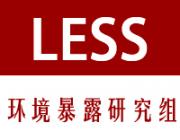Citation:
摘要:
This study aims to simulate depositions of size-segregated particles in human airway in Beijing, China during seasons when fine particulate matter concentrations are high (December 2011 and April 2012). Particle size distributions (5.6-560 nm, electrical mobility diameter) near a major road in Beijing were measured by the TSI Fast Mobility Particle Sizer (FMPS). The information of size distributions provided by FMPS was applied in the Multiple-Path Particle Dosimetry model (MPPD) to quantify number and mass depositions of particles in human airway including extrathoracic (ET), tracheobronchial (TB), and pulmonary (PUL) regions of exposed Chinese in Beijing. Our results show that under ambient conditions, particle number concentration (NC) deposition in PUL is the highest in the three major regions of human airway. The total particle NC deposition in human airway in winter is higher than that in spring, especially for ultrafine particles (1.8 times higher) while particle mass concentration (MC) deposition is higher in spring. Although particle MC in clean days are much lower than that in heavily polluted days, total particle NC deposition in human airway in clean days is comparable to that in heavily polluted days. NC deposition for nucleation mode particles (10-20 nm, aerodynamic diameter) in clean days is higher than that in heavily polluted days. MC deposition for accumulation mode particles (100-641 nm, aerodynamic diameter) in heavily polluted days is much higher than that in clean days, while that of nucleation mode is negligible. The temporal variation shows that the arithmetic mean and the median values of particle NC and MC depositions in the evening are both the highest, followed by morning and noon, and it is most likely due to increased contribution from traffic emissions. (C) 2015 Elsevier Ltd. All rights reserved.
附注:
Times Cited: 2BZHU, TONG/H-6501-2011; Yan, Caiqing/L-4180-201745221873-2844
